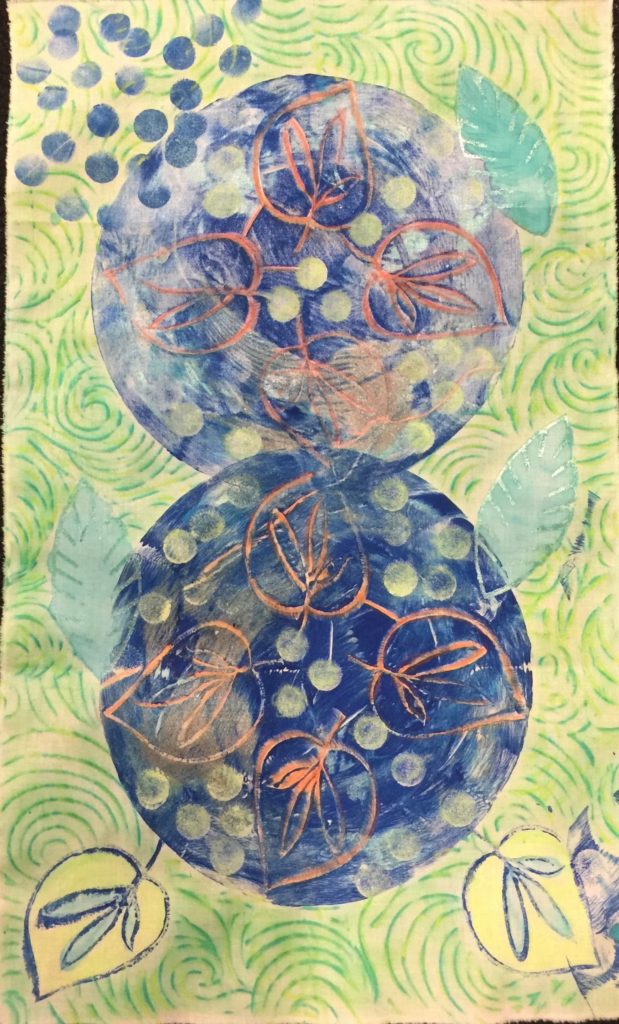I am fortunate to have some great places to teach in my area – creative spaces that foster growth and companionship. For years I have taught at Knit One Quilt Too in Barrington, RI, a beautiful store owned by Yvonne Weiss. Yvonne has curated a gorgeous collection of quilting fabrics, patterns, books, notions and an exquisite selection of yarn and fiber. I love teaching my Machine Quilting classes there and have met so many wonderful quilters thought the class.
A wonderful outgrowth of Knit One Quilt Too is Meraki Studio, run by Kristin Meranda and Liz Bessel (they were with Knit One Quilt Too for many years before they struck out on their own). Meraki is a makers space in Warren, RI offering classes of all sorts from watercolor to scarf marbling to Soul Collage. Yesterday I taught a class at Meraki in Surface Design. We spent the day playing with Gelatin Plate printing, stamping with Pro Chem fabric paint, using Shiva Paint sticks and rubbing plates, and painting with Tsukineko inks, Intense pencils, Pro Chem fabric paints and more.
The wonderful thing about teaching a class is giving students the freedom to take the techniques you teach and run with them. Carol Entin loved the idea of Gelatin Plate printing and decided to use the large plate (9 x 12 inches) to play with color and a stamp she had made of a butterfly (using a Smooth Cut printing block she carved) and a leaf roller she had also made.

This is Carol’s first print with the gelli plate. Unfortunately, since it was her first time using a gelli plate, the paint had dried quite a bit by the time she printed. She was unhappy with the lightness of the print but rather than abandoning her idea, she took the remaining paint on the plate and used it as a guide for a second print with a similar image. Perseverance paid off, and in her second attempt she achieved the intense color she was looking for. You can see that she used the paint pulled with the butterfly stamp to go back into the first print and add to the complexity of the earlier print (see the dark stamped butterflies on the lighter image above).

Vanessa Massey created a rich, earthy color with mauve overtones which gave her gelli plate prints an antique look.


We had fun with leaf shapes using Shiva oil paint sticks and textured rubbing plates. Using a background texture and a stencil brush to blend the colors helps calm the visual contrast of the plain white fabric.


Since we had the whole day to play and it was such a small class, I had time to play. I could hear my friend Nancy Messier’s voice in my head reminding me that more layers and more complexity are what makes a piece interesting. I made a series of three gelli plate prints which I then enhanced with Pro Chem fabric paints on wood block stamps. Here is the first print.

Here is the second print, which has a preliminary Shiva paint stick textured background and some color added with Intense pencils.

Here is the third print, which I had the most time to embellish. I love the pop of the complementary orange in the leaves and the lime green glow around the outside. I am going to pull elements from this print into the other two (perhaps some dots and the orange leaf shape) into the other prints to help them work together.

My next challenge will be how to make these three pieces work together. I have some ideas on which direction to go, but I know ridding myself of the heavily balanced circles will be my biggest challenge. I will update you in a future post, but would love any ideas you have to share!